You’ve packed your hiking backpack, ensured all your gear is working, picked out the right clothes, but what shoes do you wear? Deciding whether to wear hiking shoes or hiking boots is an important one that could impact the efficiency and comfort of your hiking trek.
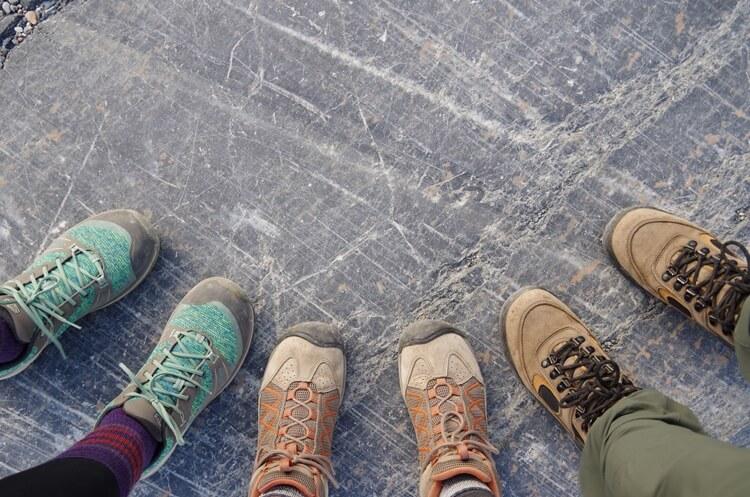
Hiking shoes and hiking boots are similar in many ways, yet so different from each other at the same time. Each shoe has its own pros and cons, and where, when, and how you plan on hiking will influence your decision on which one you wear.
There is an enormous variety of hiking shoes and boots on the market today, each with different price ranges, styles, and quality. In this article we’re going to provide you with the knowledge you need to pick the best shoe for your next hiking trip, no matter where you’re going.
The Main Differences
The difference between hiking shoes and boots ultimately comes down to several main elements, in both what they can physically provide for you, as well as the cost of them.
Durability
Overall, hiking boots are exceedingly more durable than hiking shoes. Since hiking shoes are more lightweight and made of less strong materials, they tend to wear out quickly.

Hiking shoes will typically need to be replaced after around 500-600 miles while hiking boots can last into the thousands.
Stability
While both types of shoes offer some amount of stability, they differ slightly. Hiking shoes are more flexible and provide more stability on moderate terrain, however on rougher terrain this benefit has the opposite effect and lessens stability.
Hiking boots will be a better option if you have a history of ankle problems, or are carrying a heavy load, as well as just being a good option for rougher, uneven terrain.
Protection
While hiking shoes do have protective features, hiking boots are often significantly more reinforced with protective measures than they are. This is a benefit if you’re going on a trail with rough terrain, such as mountain trails.
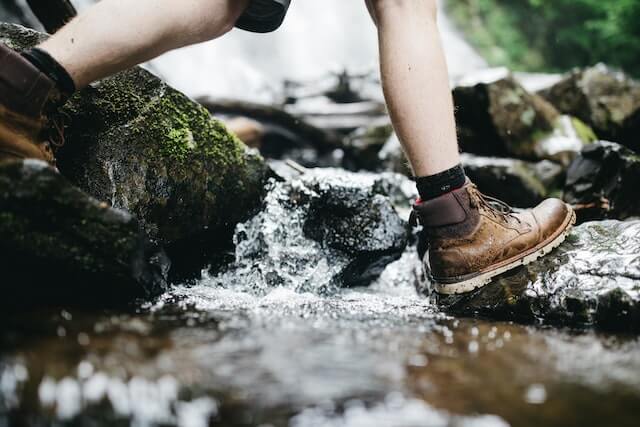
Some hiking boots are built with included shanks that enable the boots to protect the bottom of your foot from sharp objects, and improves arch support, even when supporting heavy loads.
Additionally, there are many hiking boot options that have reinforced toes and heels, such as steel toed hiking boots. Hiking boots also have notably more ankle support.
Weight
Typically, hiking boots are heavier and bulkier than regular hiking shoes. On hikes, especially long distance ones, this makes hiking boots a less desirable option.
Studies have shown that even a small amount of added weight on the feet requires more energy than that same amount of added weight on your back.
When hiking on the trail, every bit of energy counts, so this fact is important to take into consideration. However, heavy hiking boots are good for rough terrain as they help absorb significant shock and support your balance on unstable ground.
Costs
Prices between a pair of hiking shoes and a pair of hiking boots can differ extremely. Costs will depend on a wide variety of things such as the style, the quality of materials, and the brand you’re buying the shoes from.
A lower quality pair of hiking shoes can cost as little as $20 with higher quality shoes ranging from around $100-$150. Hiking boots are significantly more expensive, often double the price of hiking shoes or more regardless of the quality. Lower quality hiking boots will cost around $60 with high quality shoes costing $200-$250.
Different Materials used in Hiking Shoes and Boots
One of the most important factors in the longevity of your hiking shoes and boots is the material that they are made from.
There are two basic parts of any hiking shoe or boot, the upper; the part that molds around your foot, and the sole; the part that lies underneath your foot. Shoes are normally made with multiple materials in order to increase comfort, as well as durability.
Full-Grain Leather
Full grain leather is one of the most durable options there is; it is naturally both abrasion resistant and water resistant. With leather shoes you will get even more longevity out of the shoe if you properly treat them with things like leather grease and wax.

Leather shoes are typically quite expensive, but buying them is worth the investment as they’re the longest lasting of the material options.
Synthetics
Synthetic materials such as nylon, polyester, polyurethane, faux leather, etc. are an unnatural, human-made material. Materials like faux leather are meant to imitate the functions of leather, without being as heavy and stiff.
Synthetic materials are typically less expensive than natural materials and break down much quicker due to the poorer quality.
Suede and Nubuck
Suede and Nubuck are just different parts of a buffed leather hide. Suede is made by sanding the inside layer of the hide, while nubuck is created by sanding the outside layer of the hide.
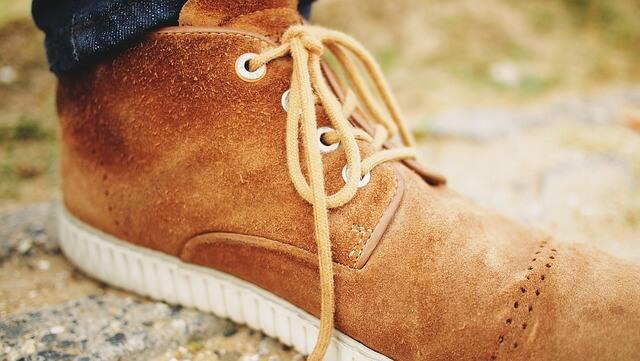
The two materials tout an increased flexibility and softness, lessening the amount of time you will need to break the time. Some people prefer them as it’s simply a different look and style. However, even though they are made from leather they are less durable as they have been buffed down, but out of the two nubuck is hardier than suede.
The two materials are both more expensive than leather, but nubuck is the more expensive of the two as it’s made from the outside layer of the hide, which is hardier than the inside.
Mesh
Mesh is often included in hiking shoes, as it adds increased breathability in the shoe. Mesh also adds increased flexibility to the shoe as the material isn’t stiff at all.
However, the material is definitely not known for its durability, and although it’s normally placed in very low-wear areas of the shoe, it tends to break down quickly.
Waterproof and Breathable Membranes
While leather, suede and nubuck, and some synthetics have some waterproofing abilities, some shoes have an additional layer in the upper of the shoe. Some shoes use GORE-TEX® or eVent®, which are a popular waterproof membrane technology.
The materials include tiny holes that are big enough to let water vapor escape from the shoe, but impermeable to outside water attempting to come in.

Due to the technology of the material it’s necessary to maintain sufficient upkeep and clean them regularly, as if the tiny holes get clogged, it will not function properly and won’t be breathable.
Shoes with these waterproof materials also make the feet feel more warmer, so if you live or only hike in hotter areas it may be smarter to look into shoes that don’t include these materials if possible.
Lastly, GORE-TEX® or eVent® are very expensive when incorporated into shoes, however the technology is extremely durable and will last you years when taken care of properly.
Different Styles of Hiking Shoes
Lightweight Hiking Shoes
Lightweight hiking shoes are good for standard hiking trails. They are typically low-cut and made from synthetic materials. They’re extremely lightweight, hence the name, and provide some protection but not much.
Minimalist/Barefoot Hiking Shoes
Barefoot shoes are one of the more recent innovations in hiking shoes, initially adopted by runners. They are best for dry well groomed environments. Barefoot hiking shoes are extremely lightweight and are designed to fit like ones socks would.
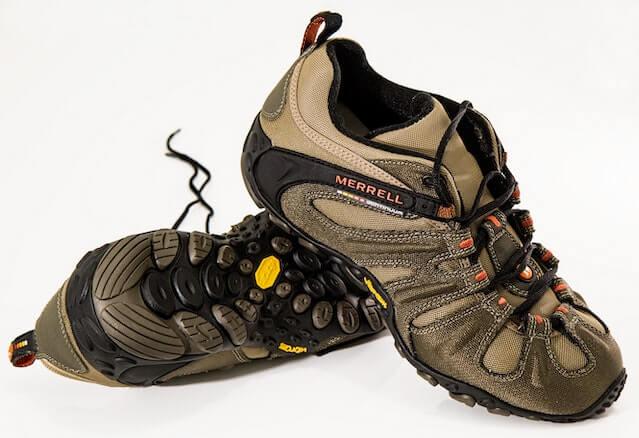
Some have toes, but there are also different styles that are more typical of shoes. They don’t offer a lot of protection against sharp items on the trail or undesirable weather, but many love the natural feeling they give.
Approach Shoes
Approach shoes are essentially a hybrid of a climbing shoe mixed with a hiking shoe. They are intended for climbers who may need to hike to their destination.
The shoes are very stretchy and lightweight, but aren’t very durable. The bottoms are very grippy making them good for basic climbs.
Trail Runner Shoes
Trail runner shoes are good for groomed trails and thru-hiking. They’re very lightweight and breathable allowing you to go faster, but provide minimal to no ankle support. Check here our guide for the best trail running shoes.
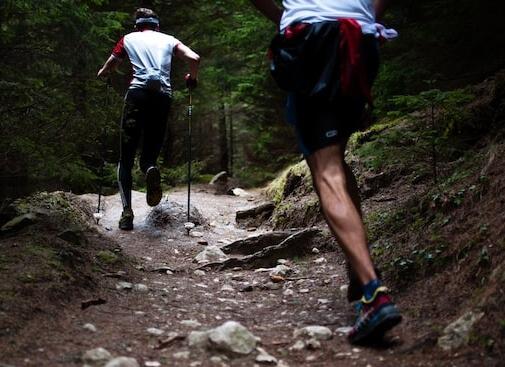
You don’t need to break them in but they aren’t very durable and they provide little to no protection against wet or cold weather.
Different Styles of Hiking Boots
Lightweight Hiking Boots
Lightweight hiking boots are another good choice for day trips and short trips. They are often mid-cut and made of extremely light synthetic materials.
The boots aren’t very durable and won’t be able to support much weight such as a heavy hiking backpack.
Day Hiking Boots
Day hiking boots are good for exactly how they’re described, day hikes or shorter treks. Day hiking boots consist of both mid-cut boots as well as high-cut boots.
They are typically waterproof, and on the lighter end of hiking boots when it comes to weight.
Backpacking Boots
Backpacking boots are good for longer, multi-day treks, and rough terrain. They are typically high-cut in order to support the ankles.
The boots often have shanks included, making them extremely durable and able to support a large amount of weight such as a big hiking backpack.
Because of the additional protection, they’re on the heavier end of hiking boots when it comes to weight. Backpacking boots are typically made with more durable materials such as leather, which makes them not very breathable.
Mountaineering Boots
Mountaineering boots are best for technical climbing in harsh, alpine environments. They have the highest cut of any hiking boots and they are significantly more stiff.
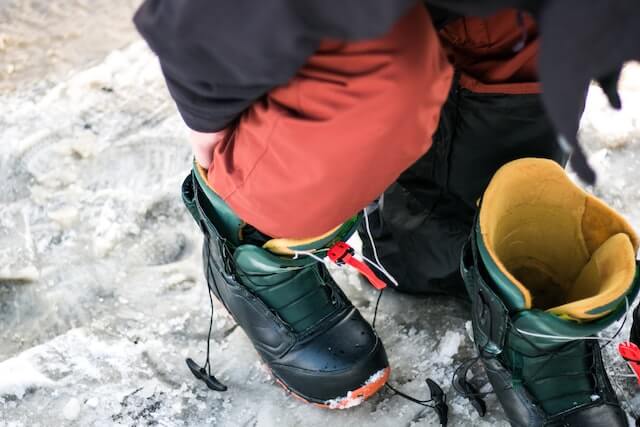
The boots also contain a lot of insulation for the cold mountain environments. While other types of boots can be versatile in where they’re used, mountaineering boots are specific for their environment and won’t be of much use in most other environments.
Pros And Cons of Each
Pros and Cons of Hiking Shoes
Pros
- Great for long distance trails and light terrain
- Breathable and light
- Comfortable
- Don’t have a “break in” period
- Compact, easy to pack
Cons
- Don’t offer much protection against wet weather like rain or snow
- Don’t have a lot of insulation, can’t wear in the cold months
- Not a lot of ankle or foot support
- Not very durable, may have to rebuy somewhat often
- Don’t offer a lot of traction
Pros and Cons of Hiking Boots
Pros
- Significant protection against the elements and rough terrain
- Absorb shock
- Often waterproof, making them good for snowy and cold water
- Good traction
- Keep your feet warm in cold weather
Cons
- Can be extremely stiff and uncomfortable to walk in
- Can be heavy, forcing you to expend more energy
- Need to “broken in” before the hike, which may take up to a week
- Bulky, hard to pack
- Low breathability and take a long time to dry out
Frequently Asked Questions
Q: Are hiking shoes or boots more suitable for rocky terrains?
A: When it comes to rocky terrains, hiking boots are generally more suitable than hiking shoes. The rugged and uneven surfaces of rocky trails require enhanced stability and protection, which hiking boots offer. The higher ankle shaft of boots provides better support and helps prevent ankle sprains on rocky terrain. The durable construction and reinforced toe caps of hiking boots protect your feet from sharp rocks and potential impacts. If you frequently hike on rocky trails or plan to tackle challenging terrains, investing in a pair of sturdy hiking boots will provide the necessary traction and stability for a safer and more comfortable hiking experience.
Q: When should I choose hiking boots over hiking shoes?
A: Hiking boots are a better option for certain hiking conditions. If you’re planning to tackle rugged terrains, steep inclines, or longer hikes, hiking boots offer superior ankle support and stability. They provide extra protection against rocks, roots, and other obstacles, reducing the risk of injury. Hiking boots are also more suitable for carrying heavier backpacks, as they offer increased durability and support. Consider hiking boots if you have weak ankles or a history of ankle injuries. Additionally, if you’re venturing into cold or wet environments, hiking boots provide better insulation and waterproofing. Ultimately, the choice between hiking shoes and boots depends on the specific hiking conditions and your individual needs.
Q: How should hiking shoes and boots fit?
A: Proper fit is crucial for both hiking shoes and boots to ensure comfort and prevent foot problems. When trying on hiking footwear, make sure there is enough room in the toe box to wiggle your toes. Your heel should feel snug and secure, without excessive slippage. Walk around the store or your home to assess the fit and ensure there are no pressure points or discomfort. Consider wearing the same type of socks you would use for hiking to get an accurate feel. Remember that your feet may swell during long hikes, so it’s a good idea to leave some extra room for expansion. It’s always recommended to try on multiple brands and models to find the one that suits your foot shape and provides the best fit.
Q: How do I break in hiking shoes or boots?
A: Breaking in your hiking shoes or boots is essential to prevent discomfort and blisters during your hikes. Start by wearing them around the house or for short walks to gradually get accustomed to the footwear. Gradually increase the duration and intensity of your walks to allow the shoes or boots to mold to your feet. If you experience any discomfort or rubbing, address the issue by adjusting the lacing or using moleskin or blister prevention products. It’s also helpful to wear your hiking socks during the break-in period to ensure a proper fit. Avoid going on long, strenuous hikes with brand new shoes or boots without breaking them in first. Taking the time to break them in will result in a more comfortable and enjoyable hiking experience.
Please note that the above information is provided based on general considerations, and personal preferences may vary. It’s essential to assess the specific hiking conditions, your comfort level, and any individual needs before making a decision between hiking shoes and boots.









